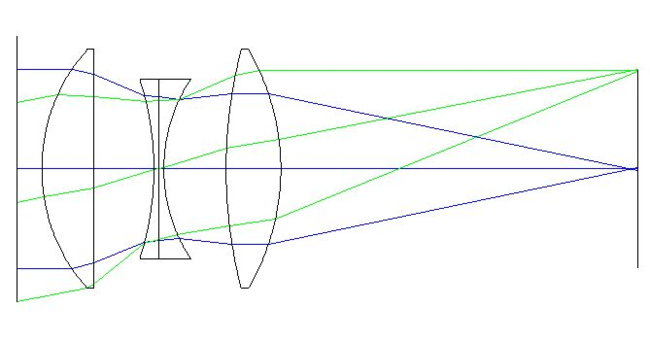Optimal position for the aperture in the optical path?
For me not just a theoretical question as I am thinking about a Frankenstein assemblage of a projection lens with an astro focal reducer, both without an aperture. In that process it will be easier to add an aperture mechanism in between both parts. Possibly not the best or even an optimal position but on the other hand adding a focal reducer to a lens with a given aperture position does not sound as best or optimal either.
I expect that the lenses we buy have the aperture at an optimal spot in the optical path. Optimal as floating elements/groups in zooms and primes will narrow the choices for its position. Lenses where the aperture is not at the best spot will show focus shift with changed aperture settings and in worst cases vignetting. The way the aperture acts on changing CA phenomena will be influenced as well. Near the MFD of a normal lens the focus shift is usually more noticeable.
I do not see much mention of focus shift or vignetting with the use of focal reducers while the combination of focal reducers with a wide variety of lenses must show some issues. Anyone with better information on that subject? Or experience?
Am I seeing things that do not exist, on a totally wrong theoretical path?
Met vriendelijke groet, Ernst
No photographer's gear list is complete without the printer mentioned !
For me not just a theoretical question as I am thinking about a Frankenstein assemblage of a projection lens with an astro focal reducer, both without an aperture. In that process it will be easier to add an aperture mechanism in between both parts. Possibly not the best or even an optimal position but on the other hand adding a focal reducer to a lens with a given aperture position does not sound as best or optimal either.
I expect that the lenses we buy have the aperture at an optimal spot in the optical path. Optimal as floating elements/groups in zooms and primes will narrow the choices for its position. Lenses where the aperture is not at the best spot will show focus shift with changed aperture settings and in worst cases vignetting. The way the aperture acts on changing CA phenomena will be influenced as well. Near the MFD of a normal lens the focus shift is usually more noticeable.
I do not see much mention of focus shift or vignetting with the use of focal reducers while the combination of focal reducers with a wide variety of lenses must show some issues. Anyone with better information on that subject? Or experience?
Am I seeing things that do not exist, on a totally wrong theoretical path?
Met vriendelijke groet, Ernst
No photographer's gear list is complete without the printer mentioned !






